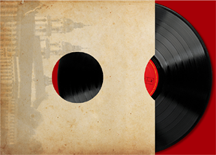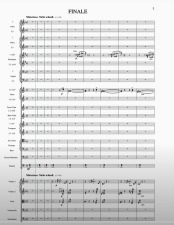John Phillips' Revision to the SPCM Bruckner 9th Finale
Finale Completion Midi via YouTube. The note below accompanies the YouTube presentation. It should also be noted that John Phillip's thesis on the completion can be found here. Anton Bruckner IXth Symphony Finale. Completion Samale-Phillips-Cohrs-Mazzuca 1983-2012. Revised John A. Phillips October 31, 2021 Midi file of the 2021 revision using Sibelius and NotePerformer. Foreword to the 2021 revision (abridged; longer version visible at beginning of video) The present editor and author is convinced that minor aspects of the 2012 version of the “SPCM Finale,” despite its success and overall credibility, still merit improvement. This revision, undertaken September–October 2021 in commemoration of the 125th anniversary of the composer’s death (11 October 1896), was also made to create a more effective midi score, with “real” tempi, variable dynamics and a mass of hidden nuancing effective in NotePerformer playback. Many small changes to scoring, tempi, dynamics and phrasing have been made throughout; substantive changes were confined to fugue and coda. In the fugue, the earlier and more credible solution of Samale, Mazzuca and Phillips for the first 9 bars of missing bifolio [19/“20”] has been restored (time code 10’58–11’17). The continuity of the remaining 7 bars of this bifolio are apparent from a sketch that dovetails convincingly into the ensuing bifolio. Like the surviving sections of the fugue preceding and following, all evidence suggests the passage was conceived as a threefold sequence, 6+6+4 bars. As the first three bars of this sequence survive at the end of bifol. 18/“19” (11’31) it required the “composition” of only three bars. The use of a series of early exploratory sketches, claimed by Cohrs as a more authentic solution, replaced the threefold sequence in the late 1990s, but it is a vague and unformed wandering in the wilderness compared with the highly structured and contrapuntally driven “Spiegelbild” sequences found on both 18/“19” and 20/“21.” No-one need mourn the excision of the early sketches nor claim their choice was stylistically more convincing than the SMP solution. The revised coda now embodies everything we know about it from Bruckner’s own sketches and verbal statements; nothing more. No surviving sketches suggest the Finale included a combination of themes, as at X in the old score, only questionable and self-contradictory statements by Max Auer. What Samale and Mazzuca conceived in this regard was well intended, but wrenching the Adagio theme onto the tonic falsified its function; the timpani quotation of the Scherzo was tokenistic. The enigmatic tritone progression (Facsimile Edition, p. 6) used for the opening of the coda (letters W to X, 19’00–20’10) would also have led to a statement of the chorale, not to a combination of themes. Nowhere in Bruckner’s score do such progressions lead into a D unison: in both exposition (letter G, 5’12) and reprise (letter U, 16’51) Bruckner arrives at the chorale via tertian progressions; in the coda F#6 to D6 (20’10). The moving chorale harmonisation Bruckner used at bars 441–444 (14’54) has now been restored here, along with improvements to counterpoint and voice-leading from hereon, re-establishing Bruckner’s characteristic “separation of powers” between woodwind, brass and strings (as in the coda of the Fifth) previously missing from the score. Preceding versions all omitted one of Bruckner’s three May 1996 sketch pages for the following, apocalyptically grand passage. The second of the three sketches (Facs. Edn. 46) outlined the bass of an 8-bar harmonic sequence, Gb-Fm6-Fb-Eb6 (Facs. Edn. 46, here bars 605–612, 20’44); this should have linked Bruckner’s sketch for the initial ascending progression at Y (20’29) with the grandiose Cb6-F-A-D progression of the third sketch (bar 613, 21’07). The composing-out of the entire passage in 1990 was largely the present editor’s work; he and Samale simply failed to decipher the second sketch. But with these critical 8 bars restored and the editor’s 4-bar continuation of Bruckner’s ascending progression revised so as to lead into it, it becomes apparent that the entire coda forms a single sweeping process in which, prompted by recall of the first-movement theme (18’44), a developmental retrospective of first-movement and Finale motives can unfold. The elements of the revised coda are therefore: (i) at W, the mysterious tritone progression leading into (ii) at X, the final, monumental manifestation of the chorale, (iii) at Y, the now extended mystical ascent slowing towards the Cb6-F apex, with review of first-movement and Finale motives, (iv) the final “catastrophic” dominant eleventh with the “Schreckensfanfare” prefigured by Bruckner prior to the fugue (cf. 9’47); and (v) at Z, arrival at the “salvation” of the tonic major. This concluding “Alleluia,” or “song of praise to the dear Lord” (21’47) was, as Bruckner explained to his doctor, to be borrowed from an earlier movement; this can only have been the D major trumpet entry at bar 5 of the Adagio which, along with the “Abschied vom Leben,” chorale (Adagio, bar 29) and tritone sequence in the coda (bar 225), were intended to presage the monumental Finale months before its composition. Dr John A Phillips japhillips1896@gmail.com Sydney, 31 October 2021 |






